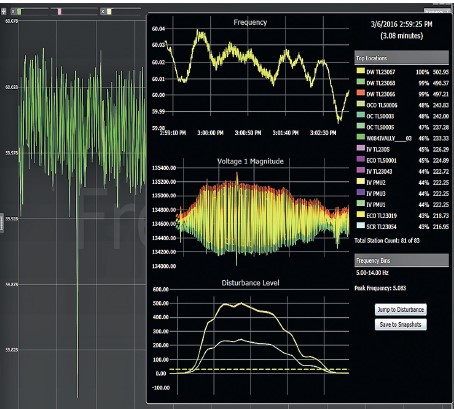by Alex Apostolov, USA

Synchrophasor technology represents a revolutionary advancement in power grid monitoring, transforming how utilities observe and manage electrical systems. This technology enables the transition from traditional steady state estimation to direct observation and dynamic state estimation.
Conventional power system monitoring relies on SCADA systems collecting measurements every 2-4 seconds. This approach uses non-synchronized data processed through complex algorithms to estimate system states. The process suffers from temporal inconsistencies, missed dynamic behaviors, computational delays, and vulnerability to bad data.
Synchrophasor technology, implemented through Phasor Measurement Units (PMUs), overcomes these limitations by providing direct measurements of voltage and current phasors with precise GPS time synchronization. Modern PMUs capture 30-120 or more samples per second with high accuracy (better than 0.1% for magnitude and 0.01 degrees for phase angle).
With strategic PMU placement, power systems move from state estimation to direct state observation. The traditional non-linear problem becomes linear because PMUs directly measure voltage phasors at monitored buses, while current measurements allow calculation of voltages at adjacent buses.
This linear approach eliminates iterative solutions, dramatically accelerates computation, improves reliability, and enhances accuracy. The high sampling rate of PMUs enables dynamic state estimation, which incorporates system dynamics models and applies filtering techniques to continuously track state variables.
This allows real-time monitoring of system dynamics during disturbances, early detection of instabilities, enhanced visibility of oscillations, and better understanding of generator and load behaviors during transients.
Implementing synchrophasor based systems requires addressing challenges in PMU placement optimization, data quality management, communication infrastructure, processing architecture, and integration with existing SCADA systems.
Solutions include strategic deployment algorithms, rigorous validation mechanisms, dedicated communication networks, scalable processing systems, and hybrid approaches that blend traditional and new technologies. The transition enables advanced applications including fast contingency analysis, early warning systems for instabilities, adaptive protection schemes, optimal control actions based on observed dynamics, and better integration of renewable energy sources. As power grids incorporate more distributed resources, electric vehicles, and other emerging technologies, synchrophasor-based dynamic state estimation becomes increasingly essential for maintaining system reliability.
This evolution represents a fundamental advancement in power system monitoring and control, providing unprecedented visibility into system behavior and enabling proactive management of modern, complex power grids.
The shift from estimating steady states to observing dynamic behaviors in real-time transforms how operators understand, predict, and respond to grid conditions.






